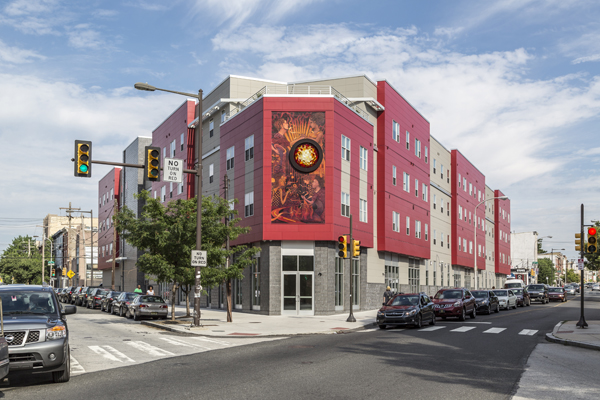Pushing the Envelope
by Alon Abramson
A recent change in how low income housing is financed in Pennsylvania, spearheaded by sustainability leader Tim McDonald of Onion Flats, could create a sea change in how all housing is built.
To entice developers into building affordable housing, the government provides funding at the federal, state and local levels. On the state level, tax credits are offered by the Pennsylvania Housing Finance Agency (PHFA) through a highly competitive process wherein developers achieve points, as many of them as possible, to win assistance.
Tim McDonald, principal at design-build firm Onion Flats, in partnership with Temple University Architecture Program’s Architectural Research Center, encouraged PHFA to add a new point category for buildings that would be net-zero on energy. The agency decided to use the already existing Passive House standard, a rigorous design approach to energy efficiency that demands nearly airtight homes, as its benchmark.
Through their successful lobbying efforts, in the first year alone, an astounding 20 percent of the projects that received PHFA financing planned to build to this new standard. McDonald’s belief is that, since the same architects, engineers and developers that build affordable housing also build standard market-rate housing, they will use their Passive House experience and learn to apply them at the same cost in commercial projects. This will cause the sea change in the housing market in Philadelphia and beyond.
McDonald and his firm are leading the charge. In 2012, two years before approaching PHFA, Onion Flats had already designed and built three homes at 1735 Belfield Ave. in conjunction with affordable housing developer Raise of Hope and the Urban Affairs Coalition. It was the first Passive House accredited project in Pennsylvania, and served as a powerful proof of concept.
Almost as impressive as the energy performance of the units was the fact they were built at the same cost as market rate homes–all while earning praise from architecture critics. To keep costs down and the construction timeline as compressed as possible, the firm used modular building technology; component blocks were constructed and finished off site in specially designed facilities. They were then transported to the site and pieced together like blocks to assemble the three-story homes quickly.
It’s an approach that significantly reduces labor costs, one of the factors with which Philadelphia developers must contend. In the end, the Belfield homes cost $250,000 to build, a number that’s in line with comparable construction projects that will be sold for as much as $700,000 a piece. The Belfield street homes, though, will be rented to formerly homeless and qualified-income families.
Other Philadelphia design firms with deep experience in sustainable design, such as Wallace Roberts and Todd, are also working to develop affordable housing locally by educating their development partners—such as Pennrose Properties, LLC—about using Passive House.
The design revolution has begun, and firms in Philadelphia will continue to set a high bar for what’s possible when developing affordable housing—and its market rate equivalents—nationally.










GREAT ARTICLE SON. GREAT JOB TIM!
Proud Momma